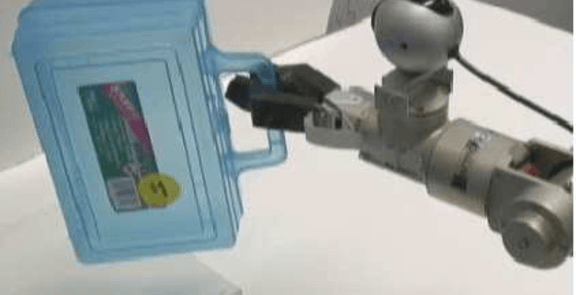Robotic Grasping of Novel Objects

We consider the problem of grasping novel objects, specifically ones that are being seen for the first time through vision. We present a learning algorithm that neither requires, nor tries to build, a 3-d model of the object. Instead it predicts, directly as a function of the images, a point at which to grasp the object. Our algorithm is trained via supervised learning, using synthetic images for the training set. We demonstrate on a robotic manipulation platform that this approach successfully grasps a wide variety of objects, such as wine glasses, duct tape, markers, a translucent box, jugs, knife-cutters, cellphones, keys, screwdrivers, staplers, toothbrushes, a thick coil of wire, a strangely shaped power horn, and others, none of which were seen in the training set.